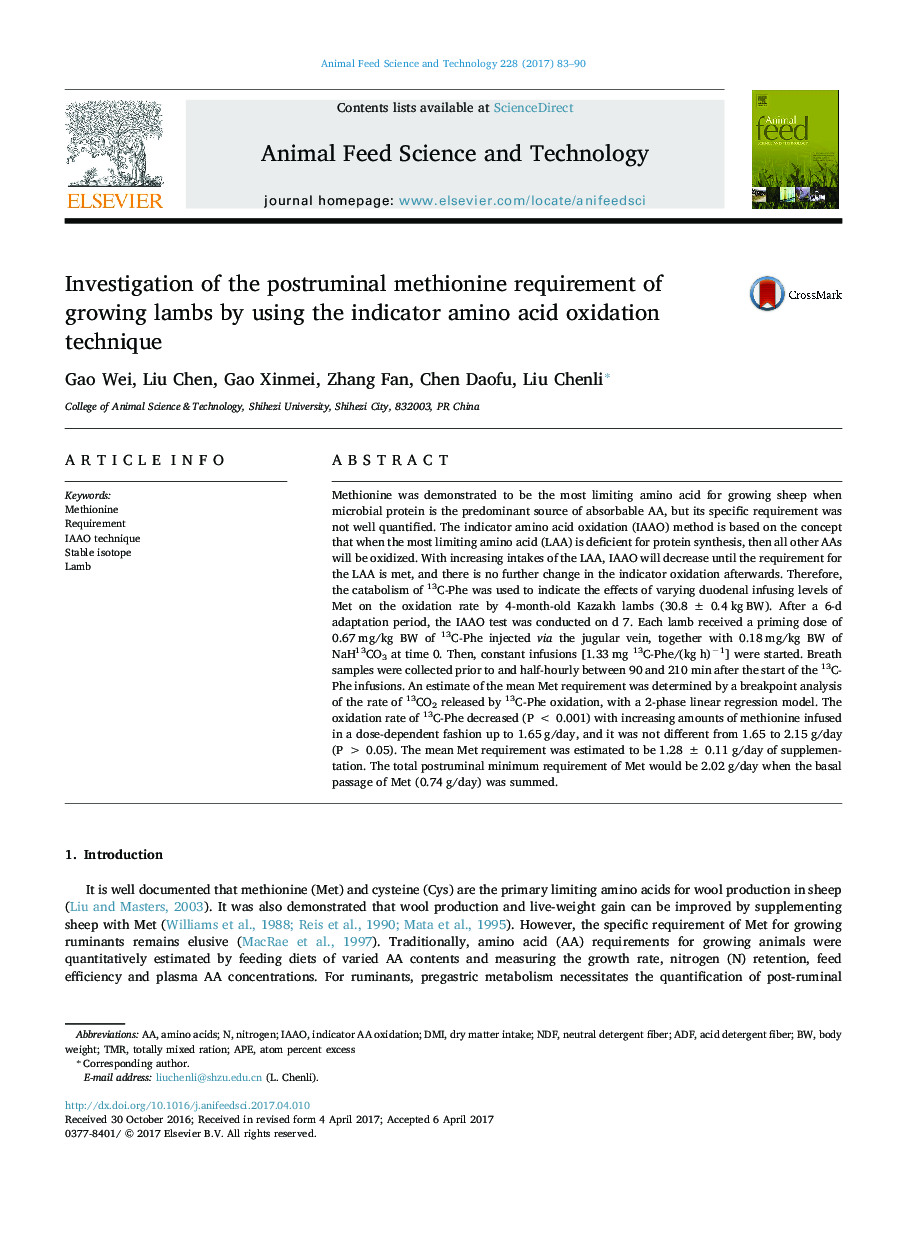| Article ID | Journal | Published Year | Pages | File Type |
|---|---|---|---|---|
| 5538907 | Animal Feed Science and Technology | 2017 | 8 Pages |
Abstract
Methionine was demonstrated to be the most limiting amino acid for growing sheep when microbial protein is the predominant source of absorbable AA, but its specific requirement was not well quantified. The indicator amino acid oxidation (IAAO) method is based on the concept that when the most limiting amino acid (LAA) is deficient for protein synthesis, then all other AAs will be oxidized. With increasing intakes of the LAA, IAAO will decrease until the requirement for the LAA is met, and there is no further change in the indicator oxidation afterwards. Therefore, the catabolism of 13C-Phe was used to indicate the effects of varying duodenal infusing levels of Met on the oxidation rate by 4-month-old Kazakh lambs (30.8 ± 0.4 kg BW). After a 6-d adaptation period, the IAAO test was conducted on d 7. Each lamb received a priming dose of 0.67 mg/kg BW of 13C-Phe injected via the jugular vein, together with 0.18 mg/kg BW of NaH13CO3 at time 0. Then, constant infusions [1.33 mg 13C-Phe/(kg h)â1] were started. Breath samples were collected prior to and half-hourly between 90 and 210 min after the start of the 13C-Phe infusions. An estimate of the mean Met requirement was determined by a breakpoint analysis of the rate of 13CO2 released by 13C-Phe oxidation, with a 2-phase linear regression model. The oxidation rate of 13C-Phe decreased (P < 0.001) with increasing amounts of methionine infused in a dose-dependent fashion up to 1.65 g/day, and it was not different from 1.65 to 2.15 g/day (P > 0.05). The mean Met requirement was estimated to be 1.28 ± 0.11 g/day of supplementation. The total postruminal minimum requirement of Met would be 2.02 g/day when the basal passage of Met (0.74 g/day) was summed.
Keywords
Related Topics
Life Sciences
Agricultural and Biological Sciences
Animal Science and Zoology
Authors
Gao Wei, Liu Chen, Gao Xinmei, Zhang Fan, Chen Daofu, Liu Chenli,
